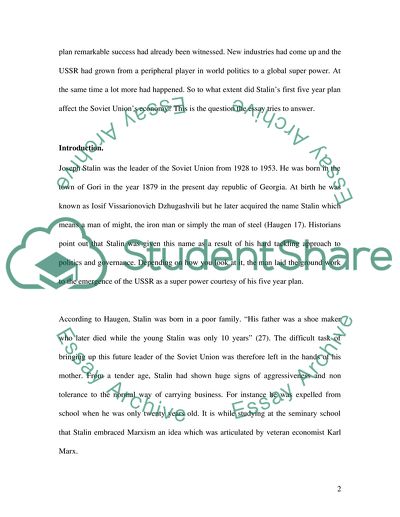Cite this document
(To What Extent Did Joseph Stalin's First Five Year Plan Affect the Research Paper, n.d.)
To What Extent Did Joseph Stalin's First Five Year Plan Affect the Research Paper. Retrieved from https://studentshare.org/history/1728095-to-what-extent-did-joseph-stalins-first-five-year-plan-affect-the-soviet-unions-economy
To What Extent Did Joseph Stalin's First Five Year Plan Affect the Research Paper. Retrieved from https://studentshare.org/history/1728095-to-what-extent-did-joseph-stalins-first-five-year-plan-affect-the-soviet-unions-economy
(To What Extent Did Joseph Stalin'S First Five Year Plan Affect the Research Paper)
To What Extent Did Joseph Stalin'S First Five Year Plan Affect the Research Paper. https://studentshare.org/history/1728095-to-what-extent-did-joseph-stalins-first-five-year-plan-affect-the-soviet-unions-economy.
To What Extent Did Joseph Stalin'S First Five Year Plan Affect the Research Paper. https://studentshare.org/history/1728095-to-what-extent-did-joseph-stalins-first-five-year-plan-affect-the-soviet-unions-economy.
“To What Extent Did Joseph Stalin'S First Five Year Plan Affect the Research Paper”, n.d. https://studentshare.org/history/1728095-to-what-extent-did-joseph-stalins-first-five-year-plan-affect-the-soviet-unions-economy.


